Mount Zion – Full Guide with Landmarks
Mount Zion, a hill south of the Old City in Jerusalem, is mentioned in the Bible, and you can visit different landmarks there.
Note: I took the featured photo of the Dormition Abbey during the Jerusalem Festival of Light.
Table of Contents
Map
Mount Zion is adjacent to the South of the Old City.
Directions for drivers: Link to Waze and Link to Google Maps
Directions for public transport: Link to Moovit
Interactive map of the area:
You can find the following map in several places in the Old City of Jerusalem.
Note: You can click on the map to enlarge it.
Mount Zion is located at the bottom of the map above between the squares N4 and P7.
Directions and Parking
For detailed directions, check my guide to the Old City Of Jerusalem.
In that guide, I mentioned different ways of reaching the Old City. And now, I want to show the way from HaPa’amon Garden (one of the cheap parking lots near the Old City). Using it, you will see lovely views of Mount Zion. Moreover, there is a beautiful place on the way. At Mendes-France square (about 300m from the parking), you can find this fountain with lions:
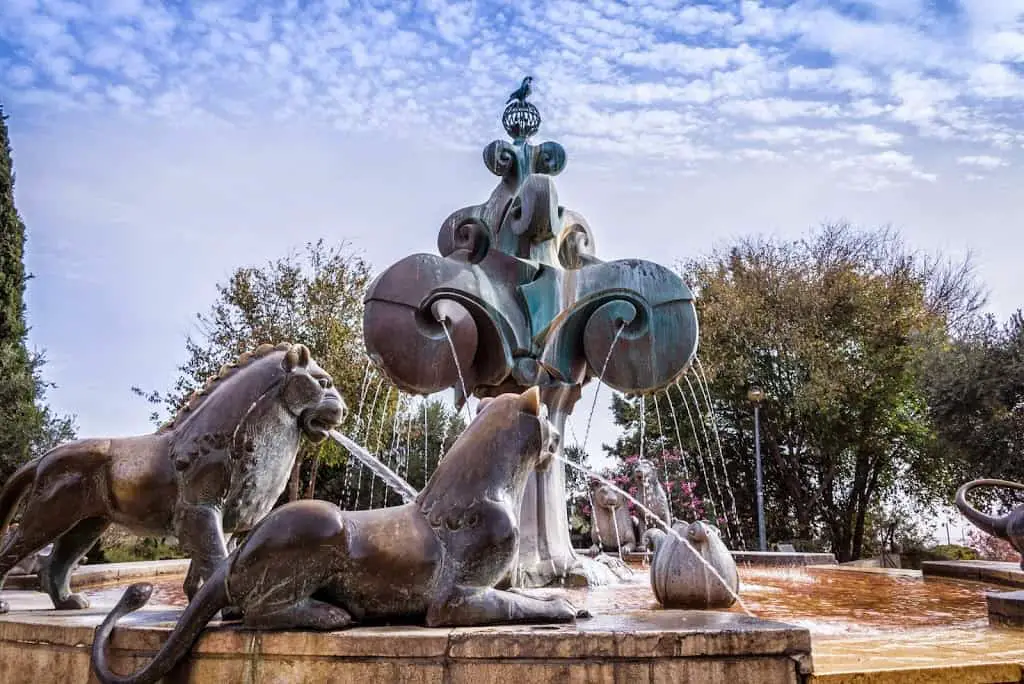
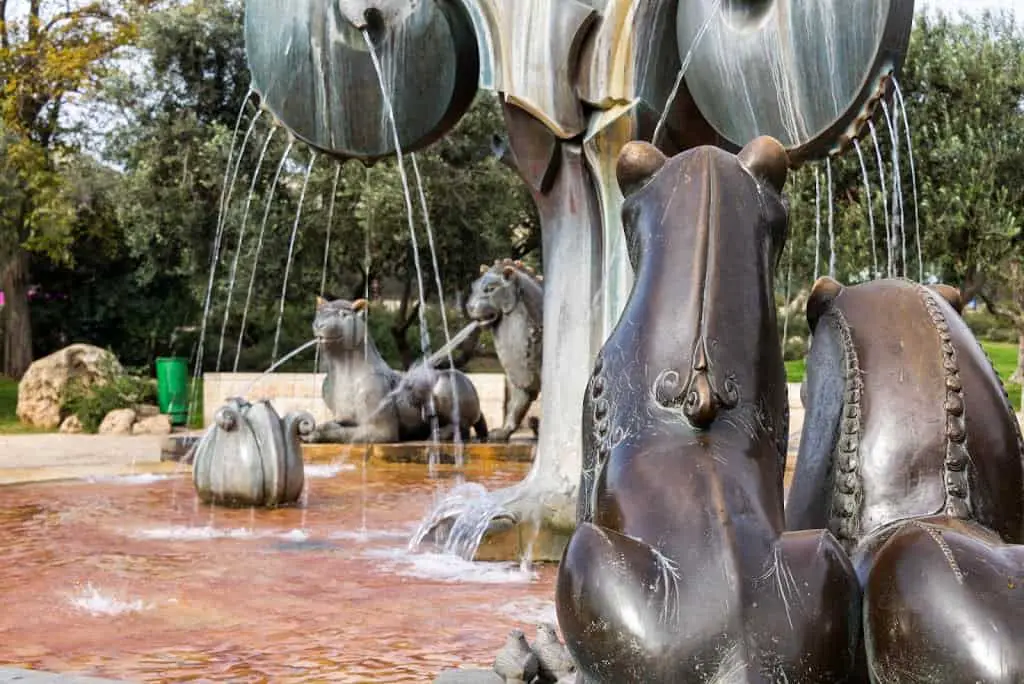
Lions were not selected randomly. The lion is the symbol of Jerusalem, and it appears on the emblem. The lion represents the “lion of Judah,” the symbol of the Tribe of Judah and, later on, the Kingdom of Judah, whose capital was Jerusalem.
As you progress towards the Old City (about 400m from the fountain), you will see the panorama of Mount Zion (on the right) and the Old City walls further away.
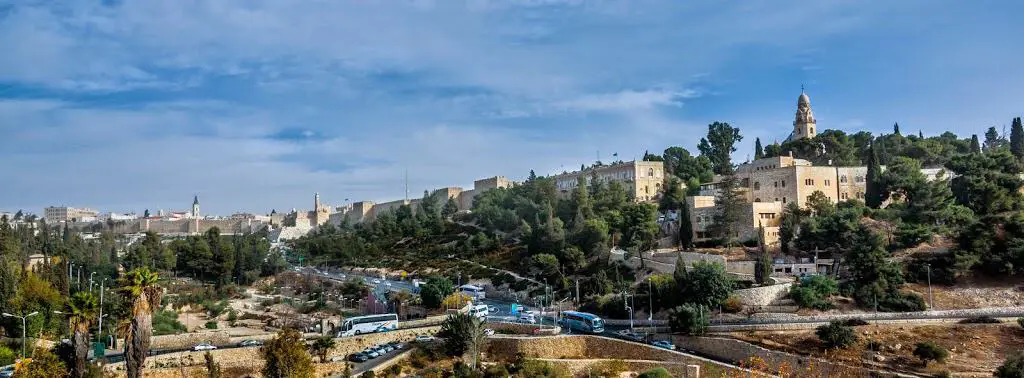
As you look at the photo above, you will notice something strange.
Why is Mount Zion outside the Old City walls?
Interestingly enough, legend has it that Sultan Suleiman the Magnificent initially meant for Mount Zion to be inside the walls of the Old City. However, the Turkish engineers who were planning the restoration of the walls accidentally left Mount Zion and King David’s Tomb outside the walls, prompting the livid sultan to execute them.
Source: itraveljerusalem.com
Remember that this route has a rather intense climb up to Mount Zion.
Mount Zion in The Bible
Zion is mentioned many times in the Bible. And in this section, I want to discuss only those mentions that tell us about Mount Zion’s location.
The City of David
2 Samuel 5:7 (New Revised Standard Version):
Nevertheless David took the stronghold of Zion, which is now the city of David.
1 Chronicles 11:5 (New Revised Standard Version)
The inhabitants of Jebus said to David, “You will not come in here.” Nevertheless David took the stronghold of Zion, now the city of David.
According to the quotes above, King David conquered the Jebusite (Canaanite tribe) fortress called the “stronghold of Zion.” Then he renamed it the “City of David.”
Thus Mount Zion was at lower eastern Hill, where the City Of David is today.
Here are two other Bible verses that tie the City Of David and Zion:
1 Kings 8:1 (New Revised Standard Version)
Then Solomon assembled the elders of Israel and all the heads of the tribes, the leaders of the ancestral houses of the Israelites, before King Solomon in Jerusalem, to bring up the ark of the covenant of the Lord out of the city of David, which is Zion.
2 Chronicles 5:2 (New Revised Standard Version)
Then Solomon assembled the elders of Israel and all the heads of the tribes, the leaders of the ancestral houses of the people of Israel, in Jerusalem, to bring up the ark of the covenant of the Lord out of the city of David, which is Zion.
Temple Mount
Psalm 2:6 (New Revised Standard Version):
I have set my king on Zion, my holy hill.
As we can see, Mount Zion migrated from the City Of David to the Temple Mount.
Once the First Temple was erected at the top of the Eastern Hill, the name “Mount Zion” migrated there too.
After the conquest of the Jebusite city, its built-up area expanded northward towards the uppermost part of the same, Eastern Hill. This highest part became the site of Solomon’s Temple.
The identification of the pre-Israelite (Jebusite) and Israelite towns on the Eastern Hill is based on the existence of only one perennial water source in the area, the Gihon Spring, and on archaeological excavations revealing sections of the Bronze Age and Iron Age city walls and water systems.
The “Mount Zion” mentioned in the later parts of the Book of Isaiah (Isaiah 60:14), in the Book of Psalms, and the First Book of Maccabees (c. 2nd century BCE) seems to refer to the top of the hill, generally known as the Temple Mount.
Source: Wikipedia
Isaiah 60:14 (New Revised Standard Version):
The descendants of those who oppressed you
shall come bending low to you,
and all who despised you
shall bow down at your feet;
they shall call you the City of the Lord,
the Zion of the Holy One of Israel.
Current Location
And to complete the picture, here is the reasoning behind moving Mount Zion to its current location:
The last shift of the name Mount Zion was to the Western Hill, which is more dominant than the Eastern Hill and seemed to first-century CE Jerusalemites the worthier location for the by-then lost palace of King David. Western Hill is what today is called Mount Zion.
In the second half of the First Temple period, the city expanded westward, and its defensive walls were extended to include the entire Western Hill behind them. Nebuchadnezzar II destroyed the city almost completely around 586 BCE, severing the continuity of historical memory. A long period of rebuilding followed, ending with Jerusalem’s second destruction at the hands of the Romans in 70 CE. Josephus, the first-century CE historian who knew the city as it was before this second catastrophic event, identified Mount Zion as being the Western Hill, separated from the lower, Eastern Hill, by what he calls the “Tyropoeon Valley.” It must, however, be said that Josephus never used the name “Mount Zion” in any of his writings, but described the “Citadel” of King David as being situated on the higher and longer hill, thus pointing at the Western Hill as what the Bible calls Mount Zion.
Source: Wikipedia
As I mentioned at the beginning of this section, Zion is mentioned many times in the Bible, and further in this post, you will see additional verses.
Landmarks
This section will go over most landmarks on Mount Zion and visit the most popular ones.
- Dormition Abbey
- King David’s Tomb – see the full description below.
- The Cenacle – Room of the Last Supper
- The Chamber of the Holocaust was Israel’s first Holocaust museum. Today this small museum is located at Ma’ale Shazkh street. And the opening hours are Sunday to Thursday from 8:00 to 17:00 and Friday from 8:00 to 13:00.
- Catholic cemetery on Mount Zion – many people go there to pay respect to a notable person. Of course, I am referring to Oskar Schindler, who saved the lives of 1,200 Jews during the Holocaust by employing them in his factories in Poland.
- Church of Saint Peter in Gallicantu is a Roman Catholic church located on the eastern slope of Mount Zion. One interesting fact is that the church’s name originates from “Gallicantu,” which in Latin means cock’s-crow. This is in memory of Peter’s triple rejection of Jesus.
Mark 14:30 (New International Version):Truly I tell you,” Jesus answered, “today – yes, tonight – before the rooster crows twice[a] you yourself will disown me three times.”
- Mount Zion Cable Car was used to transport wounded and bring supplies during the War of Independence. It was required since fire from Arab League forces made it impossible to reach Mount. Zion. The cable car was used only at night, and when the Independence War ended, IDF maintained it till 1967. Today you can find the museum, on the other end, at Hebron Road 11.
King David’s Tomb
I want to start with King David’s Tomb building. In the same building, on the second floor, you can find the upper room – The Cenacle. Moreover, the same building has a lovely roof view.
Note: I visited King David’s Tomb during the weekend. And on Saturdays, photography is not allowed there.
King David’s Tomb is a site considered by some to be the burial place of David, King of Israel, according to a tradition beginning in the 12th century. The majority of historians and archaeologists do not consider the site to be the real resting place of King David.
It is located on Mount Zion in Jerusalem, near the early 20th century Abbey of the Dormition. The tomb is thought to be situated in a ground floor corner of the remains of the former Hagia Zion, considered a Byzantine church or late Roman era Synagogue. The Diaspora Yeshiva now administers the building, a Jewish seminary group.
Due to Israeli Jews being unable to reach holy sites in Jerusalem’s Old City during the Jordanian annexation of the West Bank (1948-1967), the tomb of David became a place of worship, sought for its views of the Temple Mount, and thus became a symbol of prayer and yearning. Formerly a mosque, it was converted into a synagogue following the establishment of the State of Israel in 1948; from then onwards, the Israeli Ministry of Religious Affairs began the process of turning the site into Israel’s primary religious site. Jewish prayer was established at the site, and Jewish religious symbols were added. From 1948 until the Six-Day War in 1967, it was considered the holiest Jewish site in Israel.
Source: Wikipedia
If most historians and archaeologists do not consider the site to be the actual resting place of King David, then where is it? According to the Bible, King David’s tomb is in the City Of David. Here is the verse from 1 Kings 2:10-12 (New International Version):
Then David rested with his ancestors and was buried in the City of David.
Opening Hours of King David’s Tomb
Many sites list the following opening hours: Saturday to Thursday: 8:00 – 17:00, and Friday: 8:00 – 13:00.
The official site lists the following activity hours:
Sunday to Thursday: 21:00 – 1:00
Friday – up to 15:00 and after 19:00
Saturday – open during the whole day (24 hours)
The “activity hours” look strange to me, and I guess the best bet is coming during the working hours I mentioned in the beginning.
Anyway, King David’s Tomb functions like a synagogue. There are different entrances for men and women. And once you enter, there is not much to see. Most people do not refer to this place as part of a tourist route but as a place for praying.
The Cenacle – Room of the Last Supper
And now, from King David’s Tomb, we will go one floor up to the Upper Room, also called The Cenacle – Room of the Last Supper.
For a complete guide, see The Cenacle – Room of the Last Supper.
Former President’s Room
From the Room of the Last Supper, let’s take the stairs. Once we climb to the third floor, the roof, you can see a small building. And on the door of that building, there is a sign saying: “The President’s Room.” It was the actual President’s room until 1967. It looked like a small room from the outside, and it was closed during my visits.
Till Six-Day War, the Old City was under Jordanian control. And the Cenacle’s roof was the closest point to the Western Wall and Temple Mount.
During the 1948 war, Mount Zion was conquered by the Harel Brigade on May 18, 1948, and became the only part of the Old City to stay in Israeli hands until the armistice. At first, it was linked to the Jewish neighborhood of Yemin Moshe across the Valley of Hinnom via a narrow tunnel. But eventually, an alternative was needed to evacuate the wounded and transport supplies to soldiers on Mt. Zion. A cable car capable of carrying a load of 250 kilograms was designed for this purpose. The cable car was only used at night and lowered into the valley during the day to escape detection; it is still in place at what is now the Mount Zion Hotel. The ride from the Israeli position at the St. John Eye Hospital to Mount Zion took two minutes.
Between 1948 and 1967, when the Old City was under Jordanian rule, Israelis were forbidden access to the Jewish holy places. Mount Zion was a designated no man’s land between Israel and Jordan. Mount Zion was the closest accessible site to the ancient Jewish Temple. Until East Jerusalem was captured by Israel in the Six-Day War, Israelis would climb to the rooftop of David’s Tomb to pray. The winding road leading up to Mount Zion is known as Pope’s Way. It was paved in honor of the historic visit to Jerusalem of Pope Paul VI in 1964.
Source: Wikipedia
And here is a panorama from the roof:
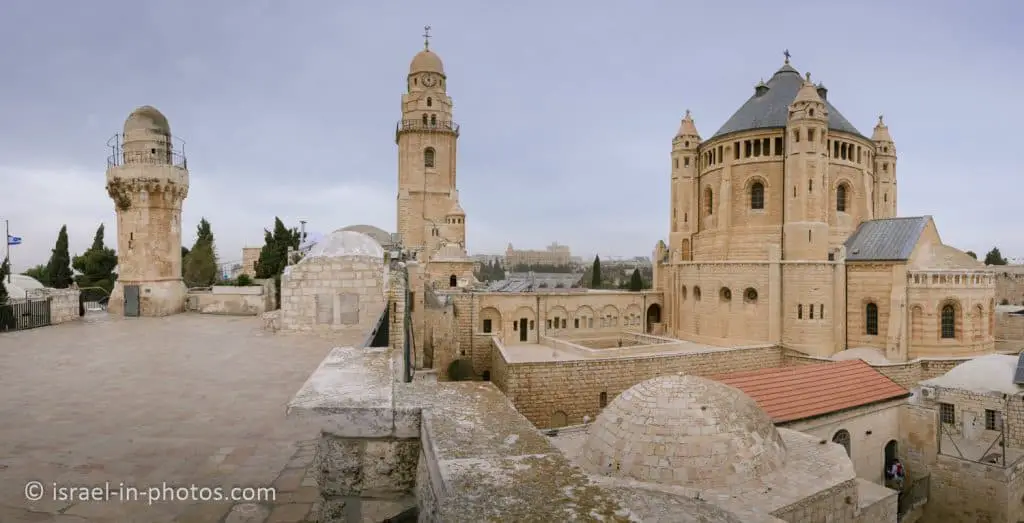
Note: see 14 Best Views of Jerusalem for a list of additional viewpoints in the city.
Dormition Abbey
And now we will visit the nearby Dormition Abbey.
According to tradition, Dormition Abbey on Mount Zion stands where Mary, Christ’s mother, fell asleep and was taken, body and soul, to heaven.
For a complete guide, see Dormition Abbey.
A reminder of the Six-Day War can be found at Zion Gate. Before entering the gate, take a look at the Old City wall. You will see many bullet holes.
Common Questions
Yes, Mount Zion is a hill in Jerusalem. Over the centuries, the name Mount Zion referred to different hills in/near the Old City. See the description above for additional information.
The term Mount Zion has been used in the Bible for three different hills. First for the City of David, then for the Temple Mount, and lastly, for its current location.
However, in the New Testament, Mount Zion is used in the broader sense and refers to Jerusalem.
The short answer is that we do not know. The book 2 Samuel 5:7 tells how David took the stronghold of Zion. Thus, the words might have non-Semitic routes. Different associations were suggested. Here are some of them: “castle” in Hebrew, “dry land” or “citadel” in Arabic, and “river” in Hurrian.
The short answer is maybe. There is King David’s Tomb on Mount Zion, but most historians and archaeologists do not consider it to be the real resting place of King David.
According to the Bible, King David’s tomb is in the City of David. But according to tradition, King David’s tomb is on Mount Zion. So, the short answer is we are not sure.
The Room of the Last Supper, Cenacle, is located on Mount Zion in Jerusalem.
Summary
Mount Zion has great historical significance, and a visit to the prominent landmarks will take at most half a day. Moreover, most of them are free. Thus, I do not see a reason not to visit it unless you are very short on time.
Have you ever been to Mount Zion? Tell us about your experience in the comments below.
That’s all for today, and I’ll see you in future travels!
Stay Tuned!
Additional Resources
Here are several resources that I created to help travelers:- Trip Planner with Attractions and Itineraries is the page that will help you create your perfect travel route.
- What is the Best Time to visit Israel? To answer this question, we will consider the weather, prices, holidays, festivals, and more.
- Information and Tips for Tourists to Israel will answer the most common questions tourists have about Israel (including safety, passports, weather, currency, tipping, electricity, and much more).
- Israel National Parks and Nature Reserves include a complete list, top ten, map, tickets (Israel Pass, Matmon, combo), and campsites.
- If you are looking for things to do, here are the pages for Jerusalem, Tel Aviv, Haifa, Sea Of Galilee, Akko (Acre), Eilat, Nazareth, Safed (Tzfat), and Makhtesh Ramon.

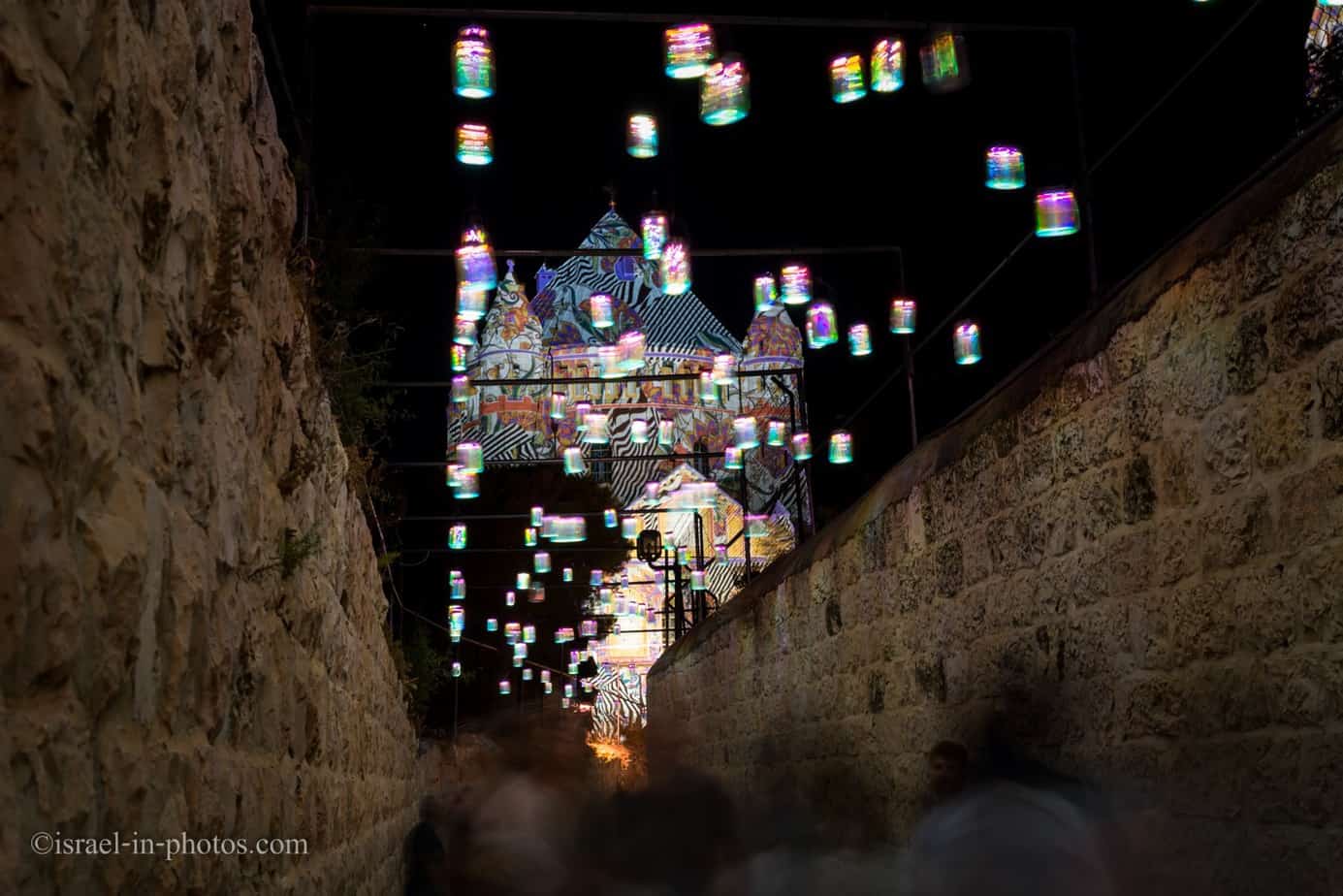
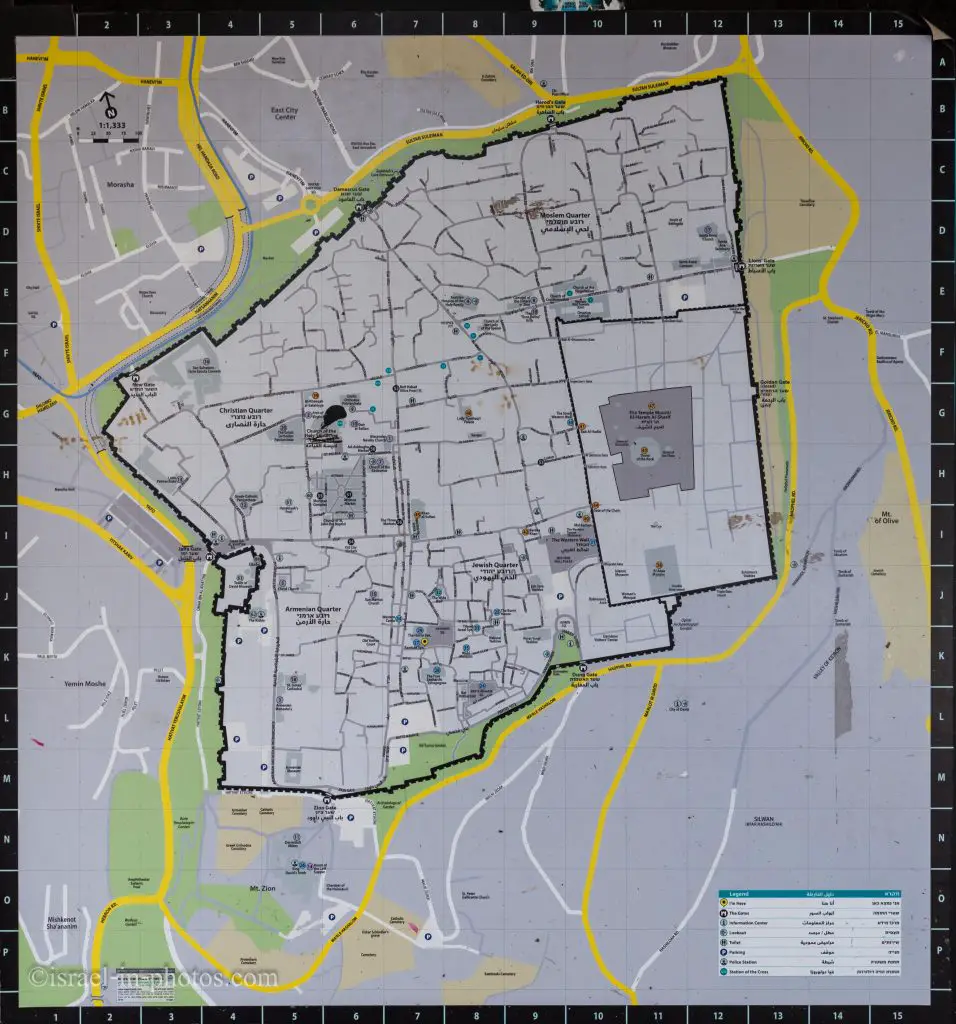

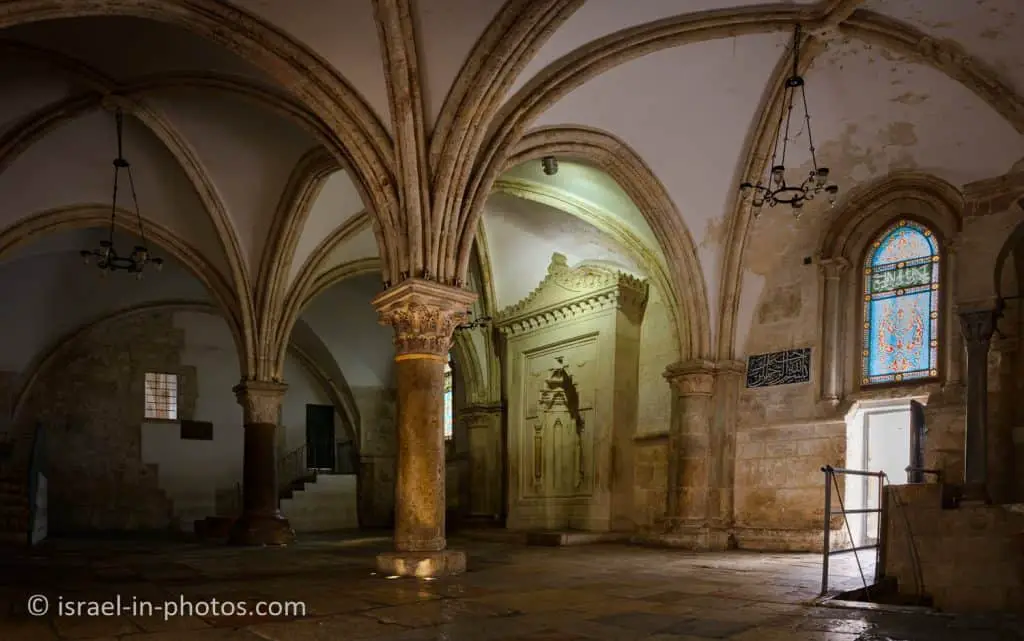
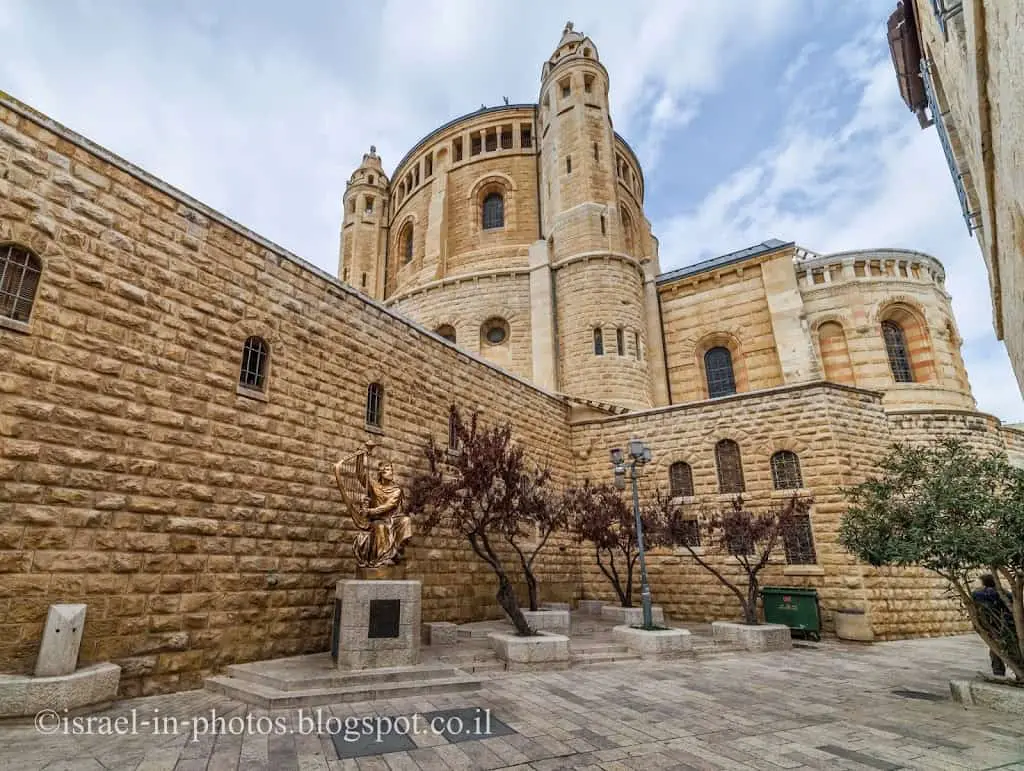
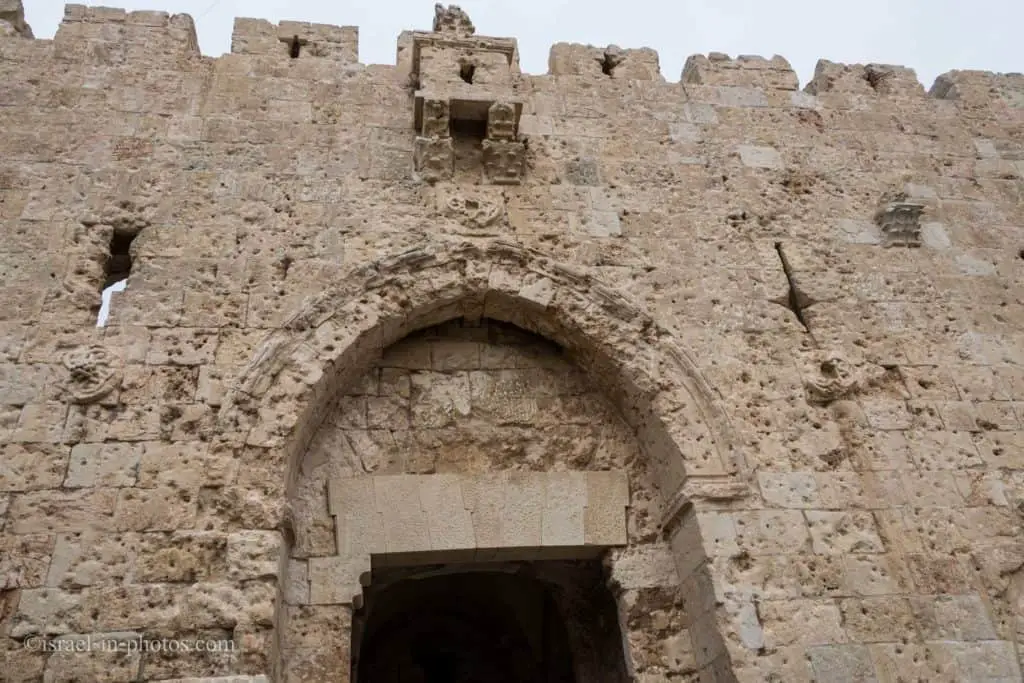
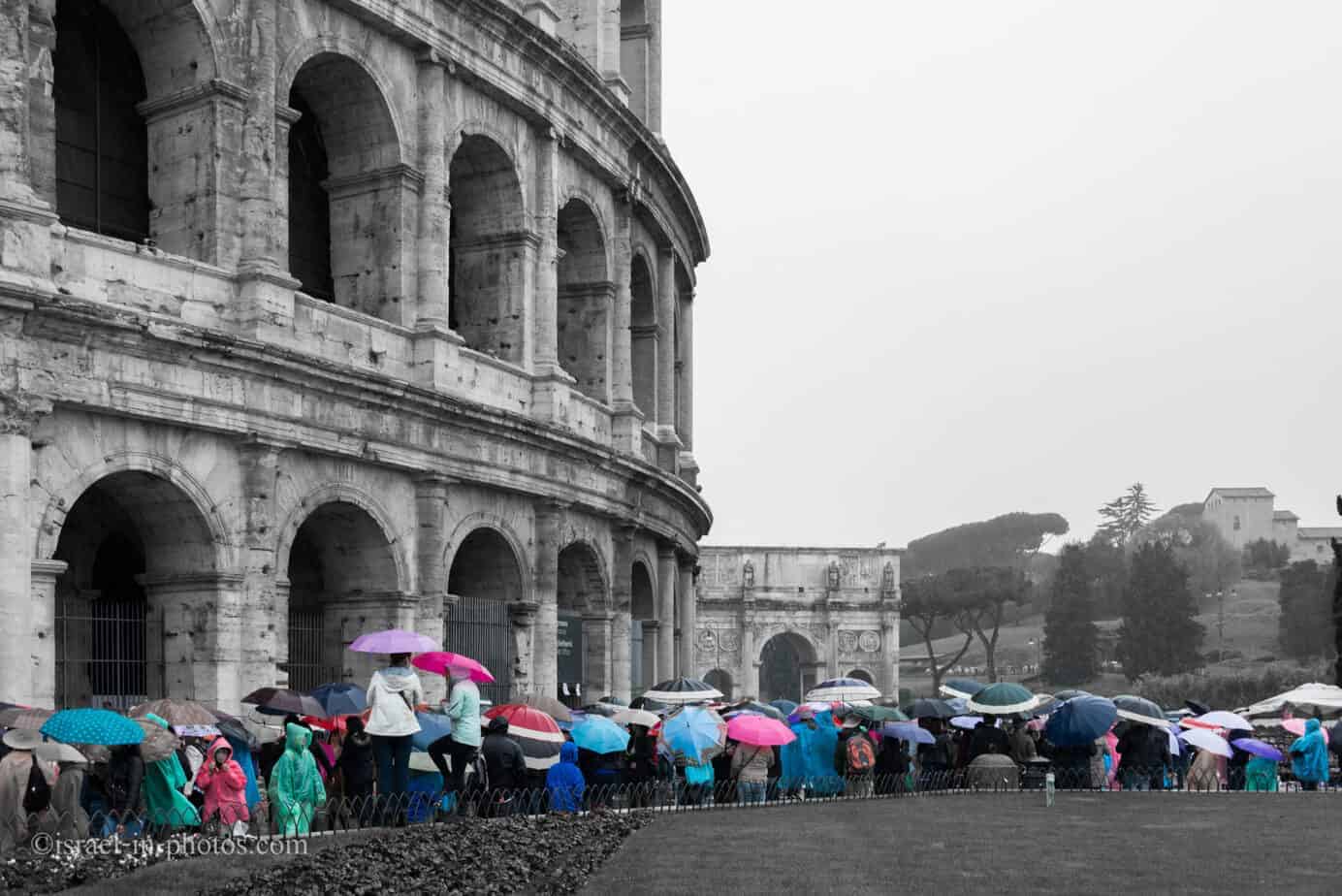


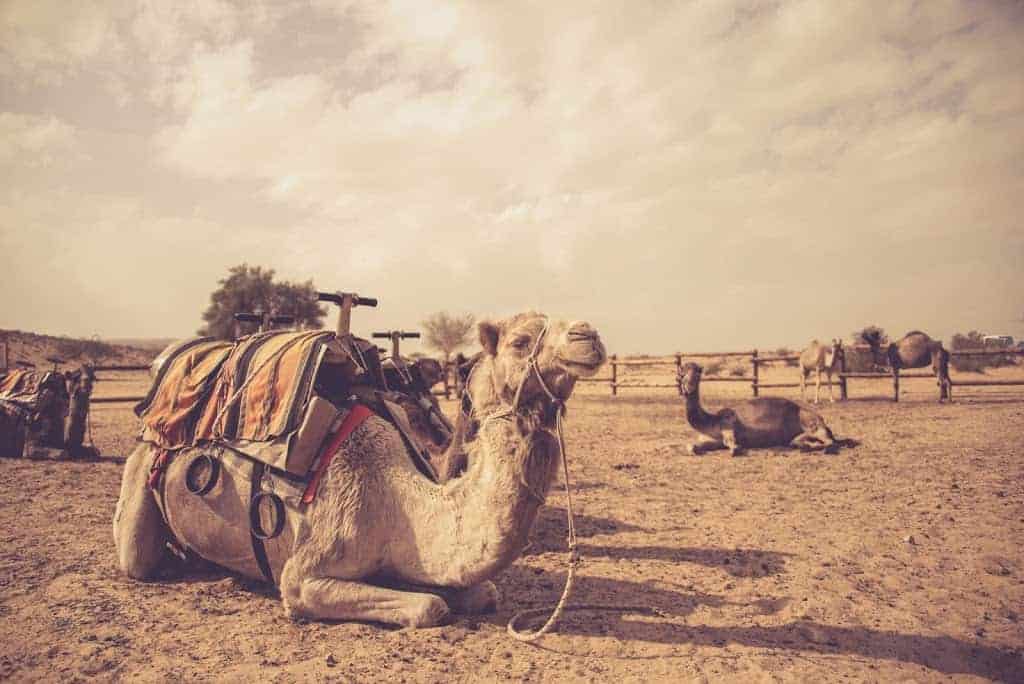


I was on Mount Zion as a lonely pilgrim. I saw all the places that you refer to in this article. Congratulations on your work on this blog. Keep going
São Paulo, Brazil
Estive no Monte Sião como peregrino solitário. Presenciei todos os lugares que Vocês se referem neste artigo. Parabéns pelo vosso trabalho neste blog. Continuem
Thank you Afonso.